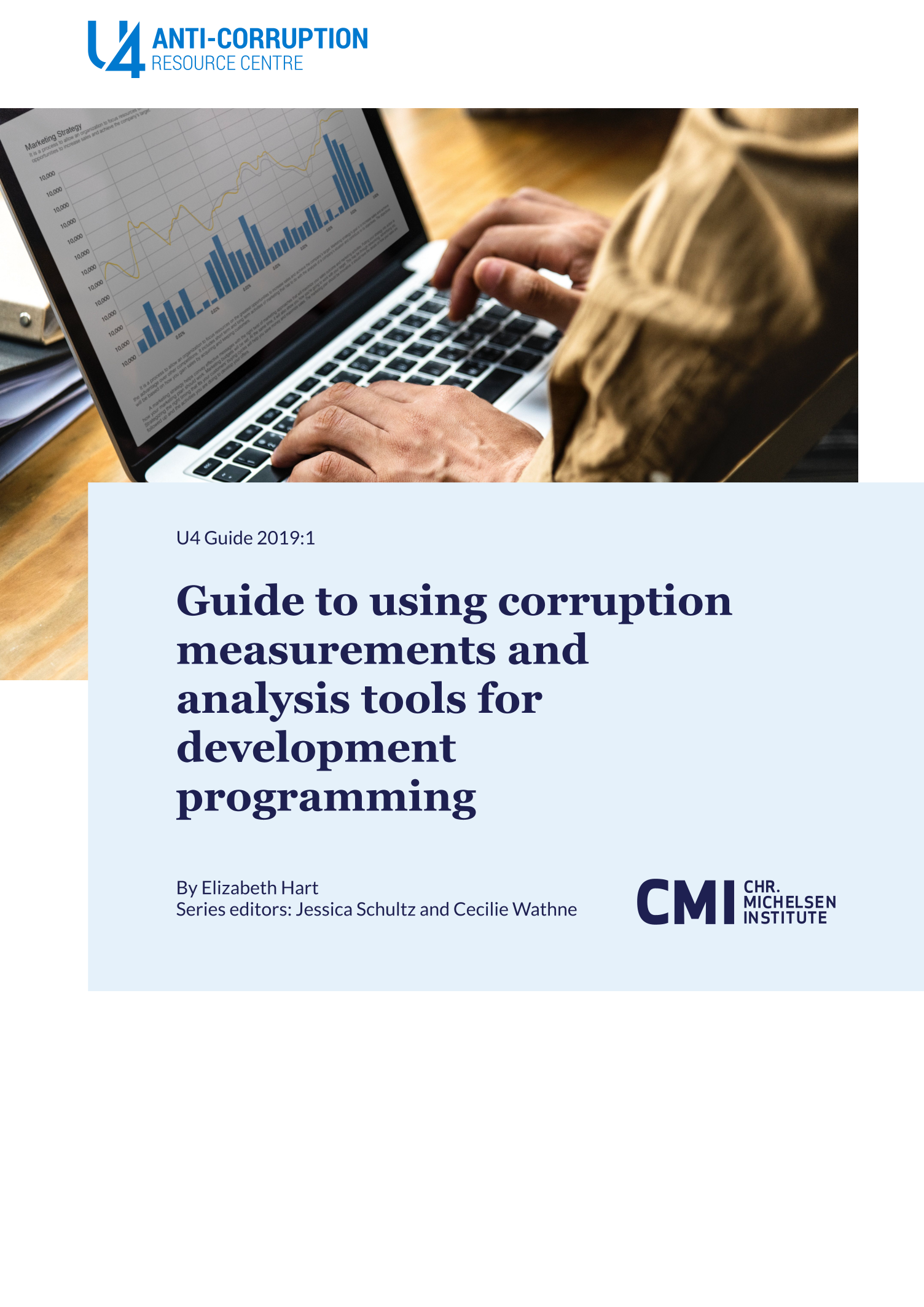Main points
- Static analyses, such as integrity system studies and corruption ‘measures’ may identify problems and areas of risk. Dynamic analyses, such as political economy assessments, identify drivers of corruption, as well as opportunities and constraints for addressing them.
- Corruption and reform in a particular sector or function of government may be influenced by factors outside that sector or function. Therefore it is important to explore elements of the broader system (for example public financial management) that can help explain corruption problems.
- Causality and attribution problems make the overall level of corruption an inappropriate outcome or even impact-level indicator.
- Multiple sources of information are usually needed to create a robust evidence base for the evaluation findings.
- Internationally-generated data sources seldom tell us what we need to know for programming. ‘Homegrown’ data such as administrative statistics, targeted surveys and bespoke proxy indicators are almost always more likely to reflect the actual effects of a given programme.


